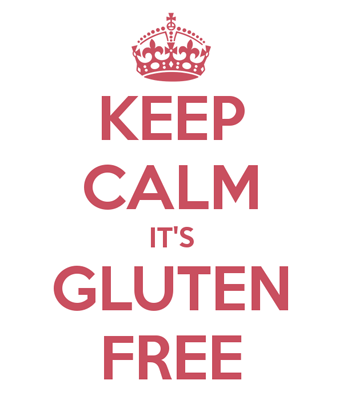Ten Tips For Living A Gluten Free Life
Growing up, my mom cooked one meal for the entire family, and if we didn’t want to eat it, we could make ourselves a peanut butter and jelly sandwich. It was rare to know of a family with a food allergy.
Those days are gone. My kids go to schools that ban peanuts, and in my own family we have allergies to gluten, milk protein, fructose and almonds…a combination that makes cooking a challenge.
 I gave up gluten about three years ago. After having my last baby at 40, my body began to revolt with auto-immune issues. I was unable to wear my contact lenses because my corneas swelled; I had spots of psoriasis appearing on my arms; and I had chronic migraines. My daughter was also experiencing food allergies, so I went though an elimination diet with her. The improvement from not eating gluten was so pronounced, I decided to stop eating it altogether.
I gave up gluten about three years ago. After having my last baby at 40, my body began to revolt with auto-immune issues. I was unable to wear my contact lenses because my corneas swelled; I had spots of psoriasis appearing on my arms; and I had chronic migraines. My daughter was also experiencing food allergies, so I went though an elimination diet with her. The improvement from not eating gluten was so pronounced, I decided to stop eating it altogether.
For those of you who are thinking about going gluten free, or who have someone with a gluten-free diet in your life, here are some thoughts about living and cooking without wheat:
1. Think from the perspective of ingredients, instead of recipes.
What ingredients CAN you eat? If you can eat chicken, think of ways to dress up chicken that still fall within your diet. Think of vegetables you can eat, and then look for creative ways to use those vegetables.
2. Don’t overlook simplicity.
A simple grilled chicken breast with steamed veggies and some butter is delicious and filling. So is pot roast with potatoes and carrots; or meatloaf made with oatmeal instead of bread crumbs; or chili with some tortilla chips; or a taco or baked potato bar, where each family member can put whatever ingredients they like on their plates.
3. Soups can be a great choice…but watch out for sauces!
Broth-based soups are your friend if you are gluten free, as long as they don’t have pasta in them. Cream of anything, and any type of bisque will probably have flour and milk. Also, watch out for flour and wheat in sauces, including soy sauce. Use corn starch instead of flour to thicken gravies and sauces.
4. Salads make a good lunch.
You can put all kinds of things on top of a salad…grilled chicken, shrimp, veggies, nuts, seeds, olives, dressings (just watch the ingredients in salad dressings).
5. Use your spices!
Pre-packaged spice mixes contain a lot of preservatives and random ingredients. Taco seasoning, for example, has flour in it. You can make great spice mixes from spices in your cabinet. Here is a yummy taco seasoning that does not have flour, and our family likes even better than the premade packages.
6. Think of alternative starches to eat.
Even if you are gluten free, you can still eat all kinds of potatoes (chips, fries, mashed, baked, fried); all kinds of rices (a rice cooker is VERY handy); oats (Cheerios and oatmeal); and corn (including corn tortillas and tortilla chips). As with all food intolerances, you can go to varying levels to avoid the culprit food. If you are looking to go ABSOLUTELY gluten free, then look for the “Certified Gluten Free” label to ensure the grain in your food did not mix with wheat gluten while growing in the fields, or in the food processing equipment.
7. Watch out for sneaky ingredients.
Ingredients are easily hidden in restaurant food and your friend’s cooking. Battered fried food; sauces; soups; meatballs are likely gluten culprits…some candies also have flour on them to prevent them from sticking to other candies. If your friend has Celiac Disease, then be mindful to disclose any and all flour you used in their meal…it can make them seriously ill.
8. Be strategic with your desserts.
You get used to the texture of gluten free baked goods after awhile. But baked goods that don’t require flour are better. Desserts like chocolate mousse, or chocolate tortes, no bake cookies,or those little peanut butter buckeyes…are awesome.
9. Good places to learn more:
Paleo websites are great places to find recipes and cooking ideas. The book The Paleo Approach is also an excellent and educational book and talks about using food to heal auto-immune issues.
10. Tell restaurants about your allergy!
If you have a true allergy, then always tell the restaurant when you order. Good restaurants will change their gloves/cutting boards/etc. to avoid cross-contaminating your food with other foods in their kitchen.
What happens if I eat gluten? I don’t have a Celiac diagnosis, so my symptoms are more annoying than debilitating: fuzzy thoughts, my hands hurt and I get migraines. Yesterday I went off my gluten free diet because I had high tea with my sisters, AND my sister made my mom’s brownie sheet cake (I really could not resist it!). Today I have a low-grade migraine and feel super sluggish…so…back to gluten free I go.